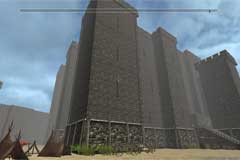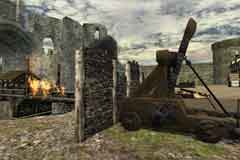
Designs were invented to help recognise one man from another. How far back this idea was first put into practice is not known but from the first half of the twelfth century (1100-1150) knights began to use designs on their flags and shields to identify themselves in battle and in tournaments. The designs commonly passed down from father to son and became means of identifying an entire family and not just a single person.
Designs were not only used by knights for military purposes. Designs were used by ordinary people for marking their territory or possessions. They were also used as seals on documents to prove their authenticity.
The use of designs in the early twelfth century we now call heraldry. It may have begun at this time because of the popularity of tournaments where a knight in armour could only be recognised by some kind of design on his flag or shield. It may have become popular during the Crusades for identifying those men who associated themselves with a particular knight.
Grammar
Over time a common set of designs were developed and a grammar of heraldry was defined. This meant that the layout of a shield could be described in words. The description of a shield and its layout is known as the blazon and with the description anyone who understood the grammar could reproduce the design of the shield. The description not only defines the colours and shapes but also defines the way that animals are facing and posed.
Sections
These next series of pages take your through the basics of heraldry.
Section 1: Tinctures

Tinctures in heraldry are the names given to the standard colours, metals and furs that cover the shield or flag. There are four main colours (black, red, blue and green). These are also known as sable, gules, azure and vert respectively. There are some less commonly used colours detailed below. A system of patterns was developed so that the tinctures could be shown without the use of the real colours. The patterns are shown below alongside the real colours.
Main Colours

Medieval Castles
Types of castles
- Early Fortifications
- Castles of William the Conqueror
- Earthwork castles
- Motte and bailey castles
- Castles of Edward I
- Concentric castles
Types of keep
Other details





